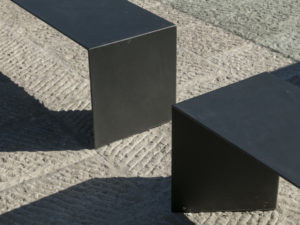Project Description
The juxtaposition of art and shopping presented the architectural practice with the challenge of creating a design for an entirely new typology that would integrate two often conflicting worlds. The concept, therefore, has been to establish a lively architectural dialogue, by means of a celebration of views into the different spaces (both gallery and retail), as well as a homogenising tiled design that presents a continuous language throughout the floor, façade and roof of the building.
The opportunity for flexibility was a key consideration, enabling the entrances to the separate uses to be distinct, whilst also providing the opportunity to connect the entire programme. Doorways, screens and boundaries are therefore highly flexible, demountable, sliding and adaptable. The Aishti Foundation building is located on a brownfield coastal site in central Beirut and replaces a number of previous warehouses, while also facing onto an enhanced seaside promenade that has been created through reclaiming land and the addition of a playful, undulating landscaping strategy. This immediately defines the site as an amenity and draws visitors. In addition, the top level offers a sky bar with striking views of the sea, as well as over the city of Beirut.
The form is a simple block that has been rotated on one edge so that it appears tilted. The retail floors are to one side of the building, configured around a central atrium. The other side of the building accommodates the Aishti Foundation galleries. The total area is 17,600m². The main entrance is punched into the façade and sits within the corner of the building, drawing visitors through the interior on a diagonal axis, which offers views towards the sea.
While the retail section of the building is wrapped in a solid façade and draws light from the atrium, the eastern façade is defined by a single large window, behind which a staircase ascends to the galleries, where the building connects with the city once again. The façade has a number of layers, so that the building is like a glazed box that sits within a louvred frame. The outer layer provides an efficient passive shading system. Laterally supported, it floats around the building, with a void between the two layers. The geometric ‘thunderbolt’ pattern of the ceramic louvres – or ‘baguettes’ – reappears in the landscaping across the entire site, as well as on the interior tiling, constituting a defining motif.





